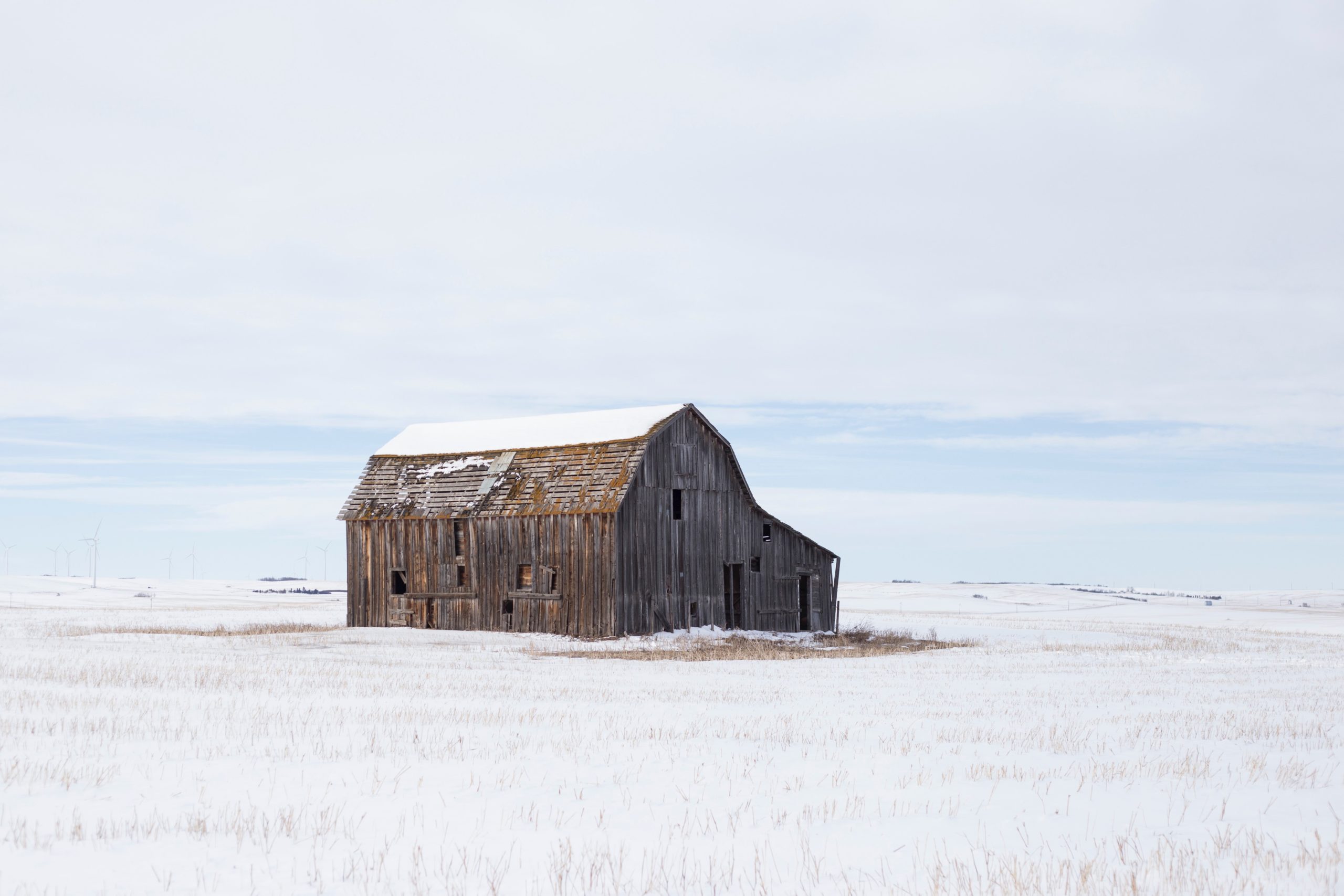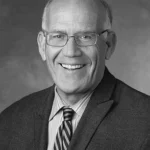

RECOMMENDED READING
In 1980, I returned from graduate school to help out on our family fruit farm that my great-great-grandmother had homesteaded in 1870. So many generations later, our rural avenue south of Fresno, California, was still dotted with farmhouses on 40, 80, 120, or 180 acres. She would have recognized the community as the same one in which she had lived.
The sociology and economy of the region remained agrarian. Families lived on the land where they farmed deciduous tree-fruit, grapes, and nut crops. School was delayed in the fall, so that farm kids could help their parents finish the raisin harvest or make enough money for school supplies and clothing by working for others. Multiethnic and multiracial families of Armenian-, Dutch-German-, Japanese-, Mexican-, Portuguese-, Punjabi-, and Scandinavian-descent—in other words, a natural rather than government-enforced diversity—had established a strong middle class, a century in the making. Commodity prices for fresh and dried fruit, and nuts, were more or less stable and sustainable, both from domestic and occasional export sales.
Neighboring rural communities enjoyed what we might prosaically call middle-class “culture”—sustainable small district hospitals, affordable homes, PTAs, Little-Leagues, Lions, Kiwanis, and Rotary Clubs, and mom-and-pop downtown stores. Crime was nonexistent. There were few rich or poor—not by design, but because agriculture masked poverty and offered a life raft for the less successful—families could raise their own food (growing up we had chickens; canned and dried fruits and vegetables; and winter stocks of walnuts, pecans, bottled and canned preserves, and raisins). “The rich” usually meant a few of the more entrepreneurial families who vertically integrated and expanded into packing, processing, trucking, and sales, but who in terms of lifestyle and appearance were nearly indistinguishable from their client farm producers.
Many farmers of my youth were World War II and Korean War veterans. A few of their children went away to college; many served in the military and fought in Vietnam. Our local community, like most in Fresno County, was polis-like, a true face-to-face society of about 6,000 citizens, who would, over a lifetime, recognize nearly all whom they met in town.
It would not have been desirable, or even possible, to replicate this model for the nation at large. But thousands of like communities throughout the country at least provided counterweights to, and cautionary voices on, the growing urbanization and suburbanization of the United States. I think it fair to say that the lives of these rural communities and their shared ethos were a vital component of the Founders’ visions of a constitutional republic, predicated upon an independent and autonomous citizenry.
I still live on my great-great-grandmother’s farm, but the surrounding community has been demolished by cosmic forces of a sort I could not have imagined when I first returned home. A few corporations presently own or lease all the surrounding land, which they mostly plant in huge blocks of mono-cropped almonds for export. Most who farmed in the last century have died or moved away. Their children have either leased or more often sold their inheritances. Few if any live where they farm, and the local community has become Medieval with a few agribusiness wealthy and an underclass of recent immigrants, legal and illegal.
In the 1990s, California’s Central Valley became ground zero for America’s illegal immigration crisis. No longer did the dispossessed from Mexico arrive legally, in measured numbers, with some English, and prepared for rapid melting-pot assimilation, integration, and intermarriage. Farmhouses of my youth became the nexus of shacks for the undocumented. Today our rural avenue is plagued by gang warfare, drug labs, illegal cock- and dog-fighting, and absolute indifference to zoning laws. I know none of the names of dozens of families who live in houses and various sheds, lean-tos, and trailers around them within our half-mile vicinity.
In many places, building inspections, mosquito abatement, dog licensing, and vaccine audits—the stuff of civilization that became normative in the 1950s—have disappeared, as California has become both the most and least regulated state in the Union. Taxes, and gas and energy prices, have soared; yet services in some areas have disappeared, with our roads, bridges, and airports among the poorest in the nation. It is dangerous to walk through our farm at night. As one of my neighbors, a vestigial reminder of a lost world, put it—we are now supposedly a kinder, fairer nation on television, but right outside our doors a far more brutal one, too.
* * *
The concerns about a declining quality of American life in this collection of essays echo my own and share a common theme of growing inequality—especially the stagnation and diminution of the proverbial middle class. Of course, the country at large is far wealthier and more leisured than it was in 1980, but perhaps also more unhappy.
There are plenty of data to substantiate such discontent. Incomes have been stagnating for decades for broad swaths of the population, alongside extraordinary gains in wealth for a narrow elite. Almost half of all Americans now die with little if any net worth. Homeownership is in decline. Credit card debt and overall incumbrances are rising. Younger generations owe an aggregate $1.7 trillion in college debt. The average age at marriage, childbearing, and first home ownership continues ticking higher. The U.S. fertility rate has fallen below 1.8 births per woman, insufficient to maintain the population at current levels.
Consistent concerns give way to what can at first seem paradoxical frustrations about government. Federal, state, and local services are faulted as either predictably incompetent, too intrusive, and overly costly, or, contradictorily, insufficient, absent, and poorly funded. And those not living below the federal poverty level seem to benefit from neither the empathy accorded the poor nor the taste and clout of the affluent.
But there is no paradox here. The problem is not that government is doing too much or too little, but rather that it is utterly failing in those key tasks that must rightfully be its focus. For instance, in the Central Valley, the abstract culprit was “globalization”: disadvantageous trade with the European Union, the outsourcing of commodity production to Mexico and Latin America, floods of illegal immigration, and a rejection of the old melting pot creed of assimilation and integration.
Until the acrimonious 2016 campaign, bipartisan orthodoxy championed “free” rather than fair trade. Policymakers cared little about the unfairness of systematic Chinese dumping, patent and copyright infringement, currency manipulation, and technology appropriation.
“The problem is not that government is doing too much or too little, but rather that it is utterly failing in those key tasks that must rightfully be its focus.”
When our commodity prices plunged due to European Union subsidies, imports from Mexico and Latin America, and monopolistic control of the retail food market by just a few huge chains ($1,400-per-ton raisins in 1982 dropped to $440 per ton a year later, while the price of a 28-pound box of plums crashed from $14 to $3), we were left with the usual government platitudes of “creative destruction.” Lower prices made us more “competitive,” and the “inefficient” were “weeded” out—all in a sense true, but blind to the cultural, social, and civilizational costs to American society at large.
The tale of woe of a few thousands family farmers in Central California was just a small microcosm of the radical transformations that redefined America in the late 20th century. Policymakers and Chamber of Commerce lobbyists told Americans that, in the case of China, such asymmetrical commercialism would eventually liberalize Beijing through mounting affluence, or at least force U.S. companies to become more productive while guaranteeing cheaper consumer prices at the local Wal-Mart. In contrast, demanding reciprocal trade was branded as racism, xenophobic protectionism, futile, or contrary to free-market enterprise.
Not all globalization was pernicious. It brought lifesaving pharmaceuticals and Westernized products to the poorest on the planet. But in America it proved wildly imbalanced. Our two coasts, with their windows East to the European Union and West to Asia, became prosperous as never before. Those with unique skills that could not be so easily outsourced or offshored—in academia, entertainment, finance, government, insurance, investment, law, media—benefited from access to a global market of 7 billion consumers rather than a mere 300 million Americans. Wall Street, Silicon Valley, the Washington-New York government and financial corridor, and elite universities achieved staggering levels of influence and affluence.
Yet, those who relied on muscular labor or owned small businesses that were not vertically integrated discovered that what they made, grew, or sold could be done more cheaply abroad, or at least they were told that. Those who served or fabricated with their arms and backs saw little economic progress or upward mobility.
To defend, or at least obscure, this disaster, analysts inverted the cause and effect of middle-class economic decline. The epidemic of suicides, substance abuse, poor health, and fragmented families in the nation’s interior was treated as spontaneously pathological. It was as if workers in the 1980s and 1990s suddenly lost their ethos and values and thus drove their jobs overseas, rather than experiencing the shock of multi-generational well-paid employment vanishing. A politicized vocabulary of elite disparagement—clingers, deplorables, irredeemables, scum, dregs, and chumps—arose to castigate them and their politics.
Government likewise has utterly failed to secure our borders, abandoning the fundamental idea of a unique place and sovereign domain so necessary for a nation-state. Over two million foreign nationals are scheduled to cross the southern border illegally this year, often with impunity. Many come without English, a high-school diploma, or much diversity. Almost none arrive with background checks, or with COVID-19 vaccinations in the midst of a pandemic. We the host know that assimilation, integration, and intermarriage occur best when immigration is diverse, meritocratic, measured—and legal. But we lack the will to impose such conditions.
There is a common mentality evident in these pathologies and among those policymakers responsible for them. It is a strange new sense of justified entitlement among our credentialed elites in government and in private enterprise. As self-righteous moralists, they now assume that their deserved affluence, influence, and cultural superiority should exempt them from suffering firsthand the consequences of their own abstract theories and misbegotten policies that fall so heavily and so destructively upon distant and forgotten others.
Recommended Reading
Enabling Families to Support Each Other
We need politicians to put families first and focus on taking care of us when hardship strikes, rather than taking care of those who are already doing just fine. Government should be about strengthening families to support each other.
Where Do Parents Go When Public Schools Go ‘Woke’?
Parents who live their lives according to religious principles should be able to find a school in which they are welcomed, not attacked or undermined.
Introducing the Edgerton Essays
The goal of these essays is to help inform policymakers and pundits about what matters most and why to the vast majority of Americans who have no day-to-day connection to our political debates.













